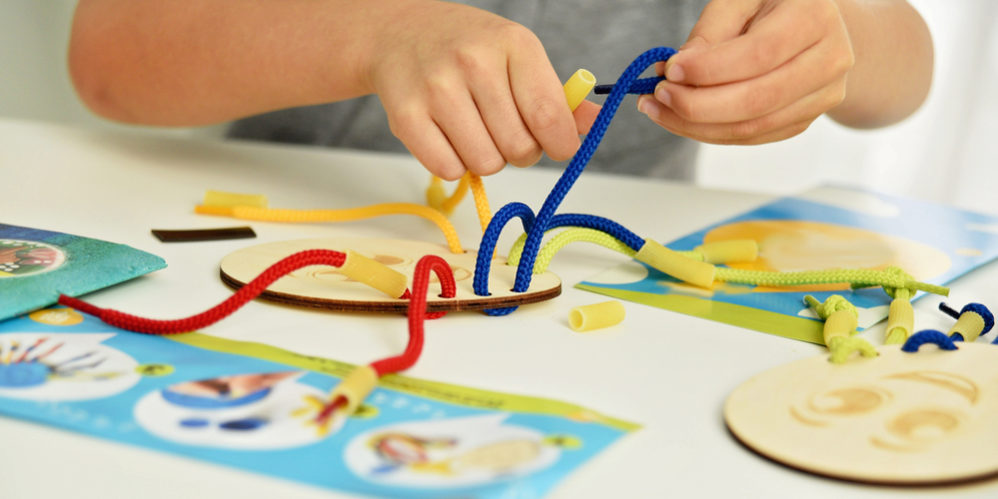What is a Montessori education and how does it help children succeed? That’s one of the questions many parents ask when looking for the best school for their kids. One of the best ways to familiarize yourself with Montessori is to step into a classroom and observe the process. If you can’t do that, this Ultimate Guide to Montessori should answer some of the questions you’re bound to have.
What is Montessori Education?
The Montessori Method was created by Dr. Maria Montessori to foster self-motivation and a love of learning in children. Every child is able to take the reins of their education. They are observed and guided by the teachers, nurtured by the beautiful classroom environment, and supported by their peers and the community they create together.
The Montessorian perspective is that education should be multi-sensory and provide a broad base of knowledge that can later be built up and refined. This all depends on the interests of the child.
One of the key characteristics of the Montessori Method is that it has undergone continuous development since it was first created. Unlike public education which has more or less remained the same in structure and teaching style, Montessori education is always improved upon through research in child development and learning, as well as teaching methods and curriculum.
Core Principles of the Montessori Method
The Montessori Method is built upon the philosophies and findings of Dr. Maria Montessori. Here are some of the principles of Montessori education that make it so beneficial:
Experiential Learning
Rather than having to rely on rote memorization, children learn through play. A Montessori classroom is filled with activities that the students use to explore concrete concepts. For example, they might use a set of sandpaper letters or numbers to learn what each letter looks and feels like. Dr. Maria Montessori found that children learn best when they have hands-on experience, which is why all the materials actively engage their minds and bodies.
Freedom Within Limits
You will hear and see this phrase a lot when researching Montessori. Freedom Within Limits is an expression explaining the philosophy behind a child-directed education. Children are allowed to choose their tasks for the day. They can decide where to work or sit, for example. This doesn’t mean there is chaos in the classroom either. The students know that work time is for work and that they must clean up after themselves.
Wholesome Education
The whole child benefits from a Montessori education. There are a number of activities the students can choose to do, but what they do is always their choice. This is why you might see one child practicing how to cut fruit while another is doing yoga. In one corner, a child may be working with counting sticks while his friend is working on sewing buttons to a piece of paper.
These activities are designed to promote physical, mental, emotional, social, and spiritual education, not just academics.
Peace Education
Few forms of education teach students how to resolve conflicts peacefully, but Montessori education does. Dr. Maria Montessori firmly believed that the future of humanity depended on teaching kids the art of peace and tolerance. Within the classroom, the need for community is emphasized in lessons. Children learn that they are part of a community, not just in the classroom but the whole world.
Teachers focus on providing students with techniques for controlling their emotions, resolving conflict peacefully, and working together with others.
How Does Montessori Benefit Children?
Children who attend Montessori schools tend to be happier. This is because the Montessori Methods increase competency, social skills, and self-discipline. What does that mean?
In terms of competence, children with a Montessori education consistently rank higher in academic skills than their peers. Because children have a chance to explore subjects at their leisure and with hands-on activities, they retain the information better. Since children make their own choice to work on something for a long period of time, they become self-motivated and disciplined.
Lastly, Montessori kids are friendly, cooperative, and helpful. This is because they are free to grow in a non-competitive community where everyone has a chance to be a leader. Plus, Grace & Courtesy is part of the Montessori curriculum.
What is a Montessori School Curriculum Like?
Many of the qualities of public schooling are reversed with Montessori. For example, instead of teaching the majority a concept, the Montessori teacher will teach an individual or small groups in the classroom. The teachers are trained to observe each child. They will never have a student sit down with a task they aren’t ready for, and they consider the interests of every child in the room.
You will notice that the Montessori curriculum is broad in the beginning then becomes more concerned with details later on. In the beginning, children work to develop motor control and their senses. Later, they start to use language. Every skill that they work on begins with a basic understanding. Then they build upon those foundational skills until they have mastered the skill.
There is no limit to what a child can learn. Montessori classrooms have activities that build strong skills in language, science, match, cultures, history, music, art, dance, and even practical life skills, like carpentry, sewing, and cooking.
Conclusion
Having read the Ultimate Guide to Montessori, you should understand some of the basic concepts of this method. Montessori education is all about respecting the individual and allowing children to learn through play. Moreover, kids who attend a Montessori school gain valuable knowledge in practical skills, soft skills, and academics. It’s a wholesome education.
Looking for a Montessori school in Philadelphia for your younger children? Fishtown Montessori has several programs that may interest you. Our experienced and passionate staff would love to meet you, so contact us today to set up a tour.






